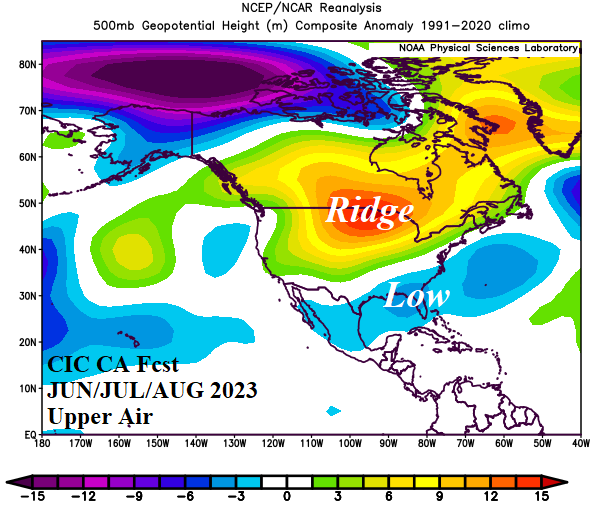Dramatic Subsurface Warming in East Pacific as Stronger El Nino Forecasts Gain Credibility
04/17/2023, 11:36 am EDT
Projecting Upper Air Pattern across North America Next 3 Seasons
04/19/2023, 5:24 pm EDT
Fig: 1: Rainfall required to neutralize dry Palmer Drought Severity Index (PDSI) and weekly change.
Discussion: The intense drought spread across the central and southwest Great Plains and into Texas worsened last week (Fig. 1). The worsening condition in this region was observed in each climate division within the affected area except much of Kansas where intense drought remained steady, southeast Colorado, and the upper coast of Texas. Wet weather cut rainfall deficits in half across southern Texas and almost eliminated dry soils in southeast Florida where historic rainfall occurred. Most of the Mid-Atlantic region trend was drier during the past week. North and northwest Virginia across south-central Maryland into central Delaware has 6-9 in. rainfall deficits now. Long Island, Upper New York State, and coastal Maine trend was drier. The strong dry PDSI in Washington was steady.
The GFS ENS is utilized to identify the most likely rainfall pattern across the U.S. over the next 15 days (Fig. 2). The sensible outlook identifies wet weather risk across the northern Great Plains and Upper Midwest where additional snowfall is likely. Wet weather featuring some snow in Ontario/Quebec and the Great Lakes is also expected. The Mid-south States find heavy rain/strong-to-severe thunderstorm risk. The Northeast Corridor is also very wet.
The 24-hour forecast change is wetter from the northwest Gulf States to the Tennessee Valley to the Northeast Corridor (Fig. 3). The Upper Midwest is wetter. The Great Plains drought forecast varies from one model to the next, however, compelling rainfall to help ease drought IS NOT likely.
The snow cover in the northern Great Plains and Upper Midwest is exceptional and rare for this time of year (Fig. 4). Crop areas hindered by snow cover are northern soybeans and spring wheat. Operational models are overdoing additional snowfall in the latest 1-2-week outlooks. However, additional snowfall for the affected areas is indicated at least through the next 10 days. Colder than normal temperatures hang on through 15 days and possibly longer. Consequently, snow on the ground on May 1st is increasingly likely for eastern North Dakota and much of northern Minnesota to northwest Wisconsin at that time. Complete melting is projected for May 5-10.

Fig: 2: The GFS ENS 15-day precipitation anomaly forecast for the U.S.

Fig: 3: The GFS ENS 15-day 24-hour precipitation change.

Fig: 4: Daily U.S. snow depth analysis.
![Climate-Impact-Company-logo-sm[1]](https://climateimpactcompany.com/wp-content/uploads/2023/08/Climate-Impact-Company-logo-sm1.png)